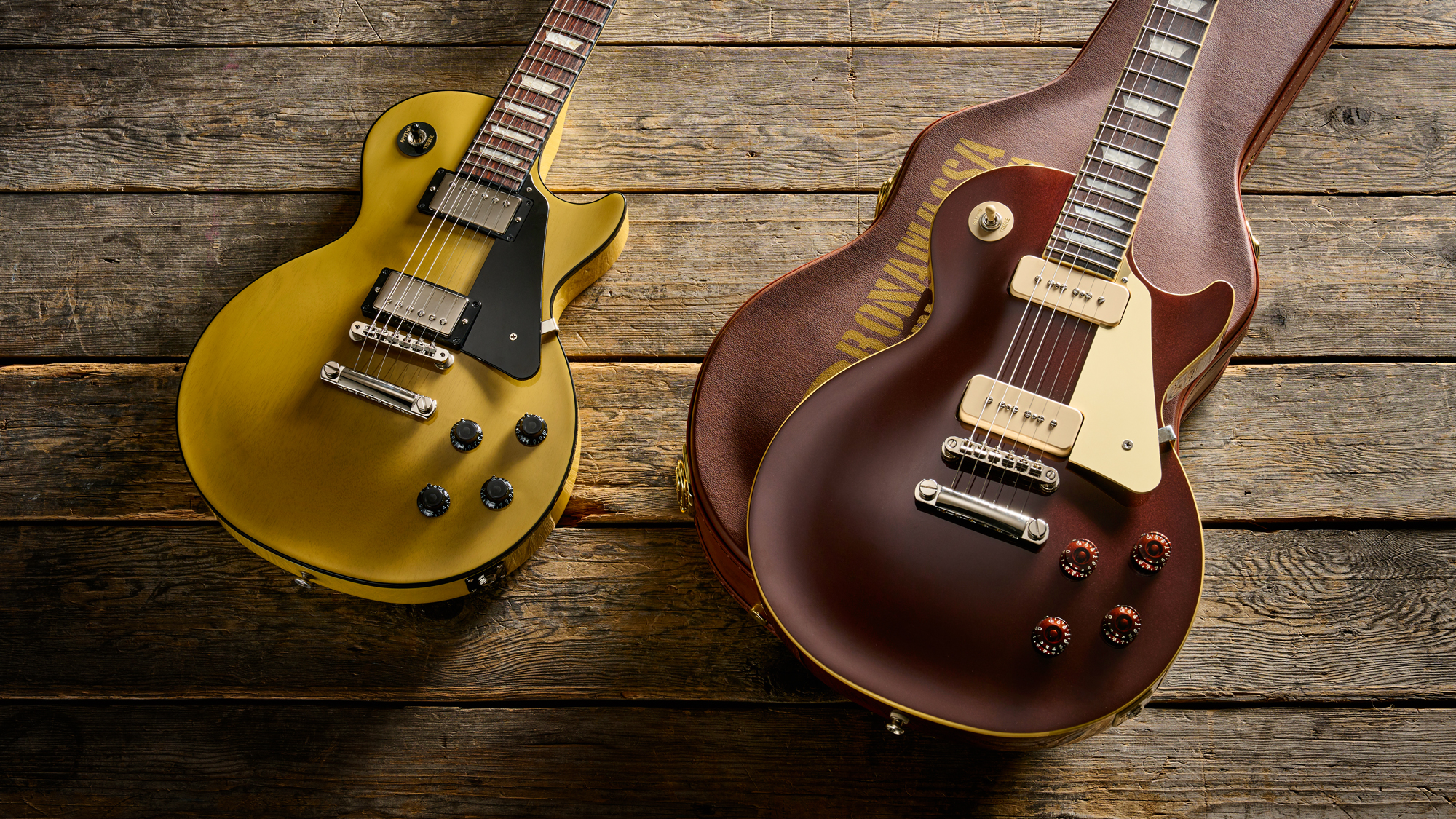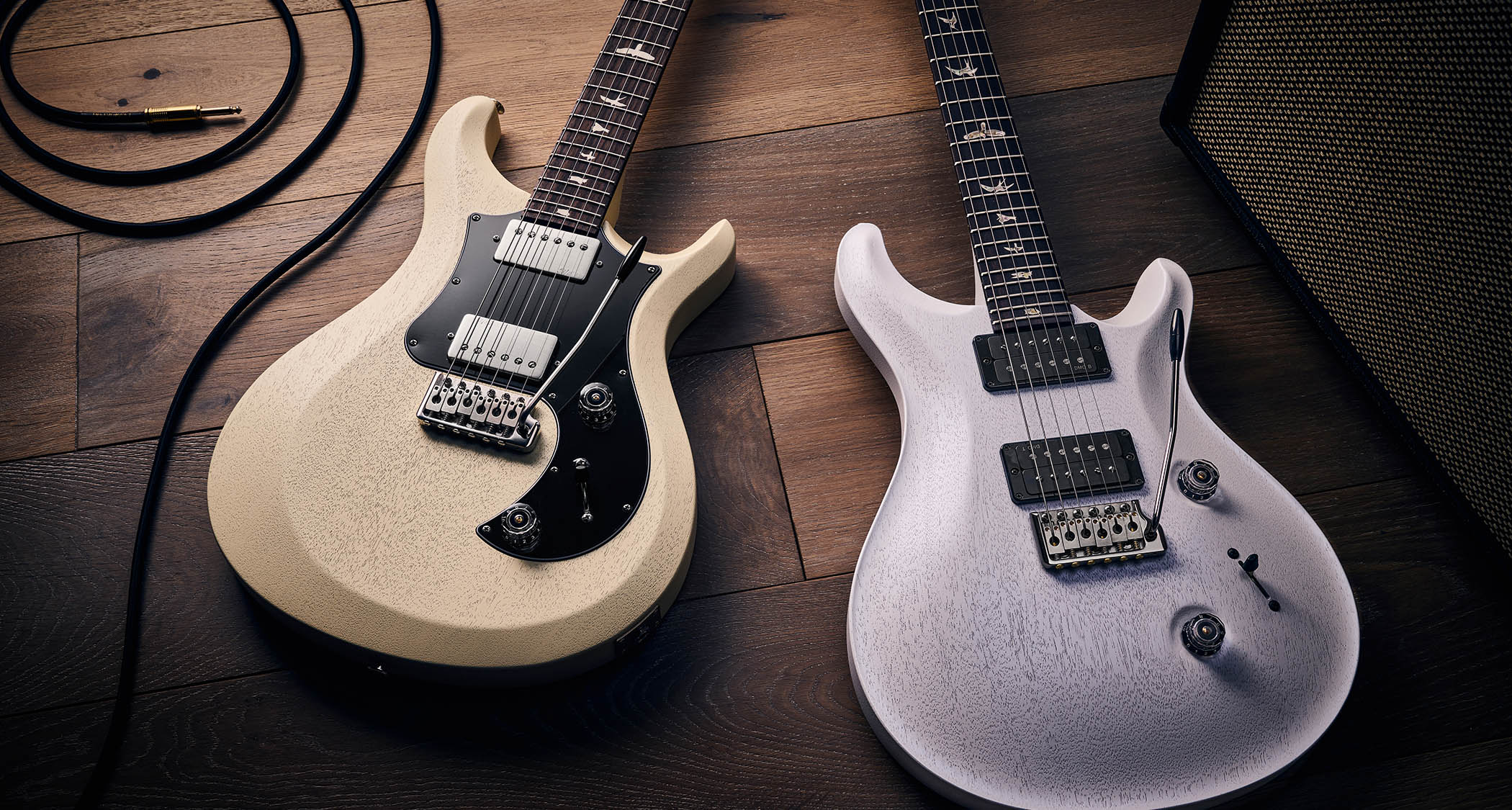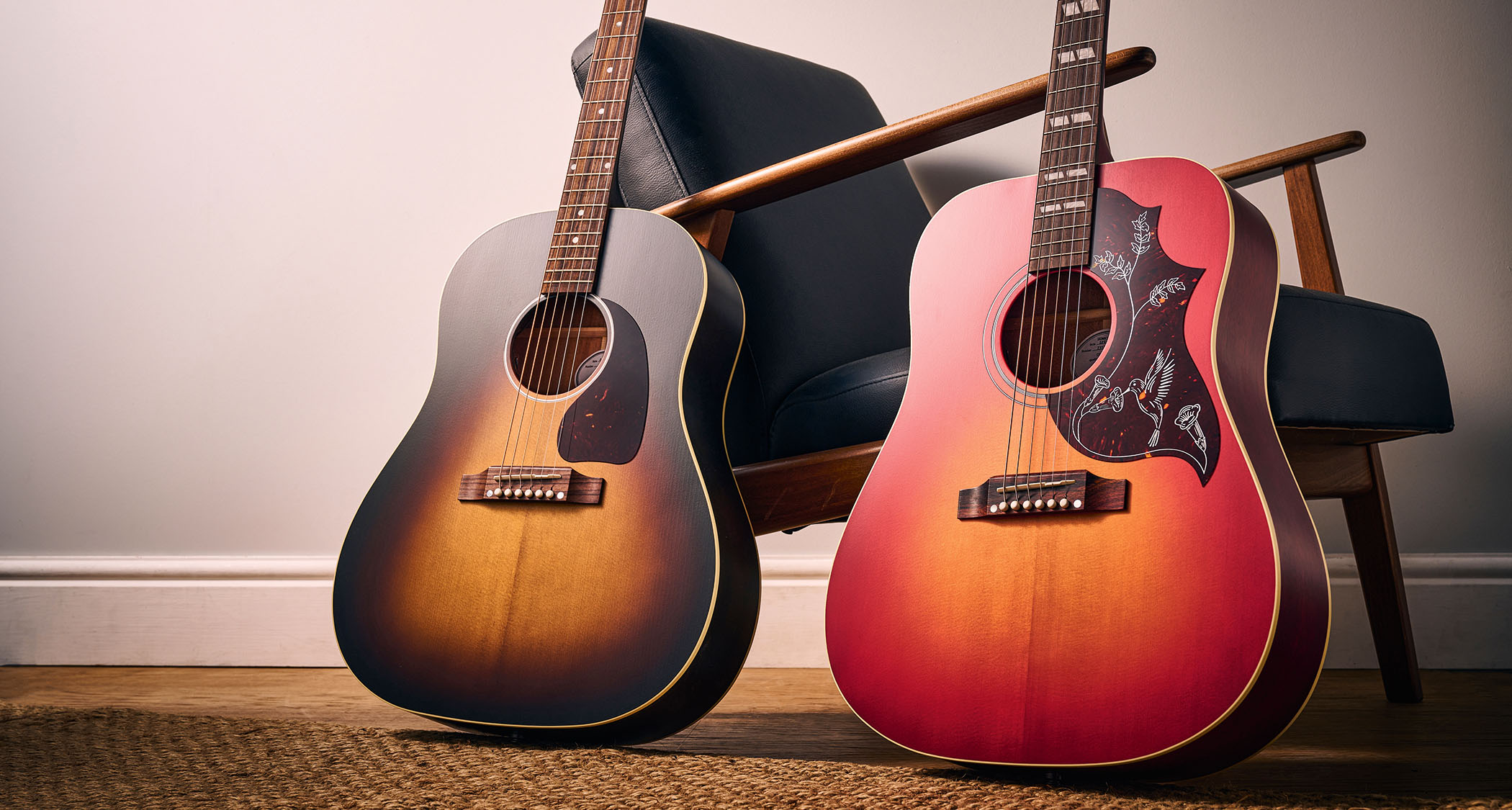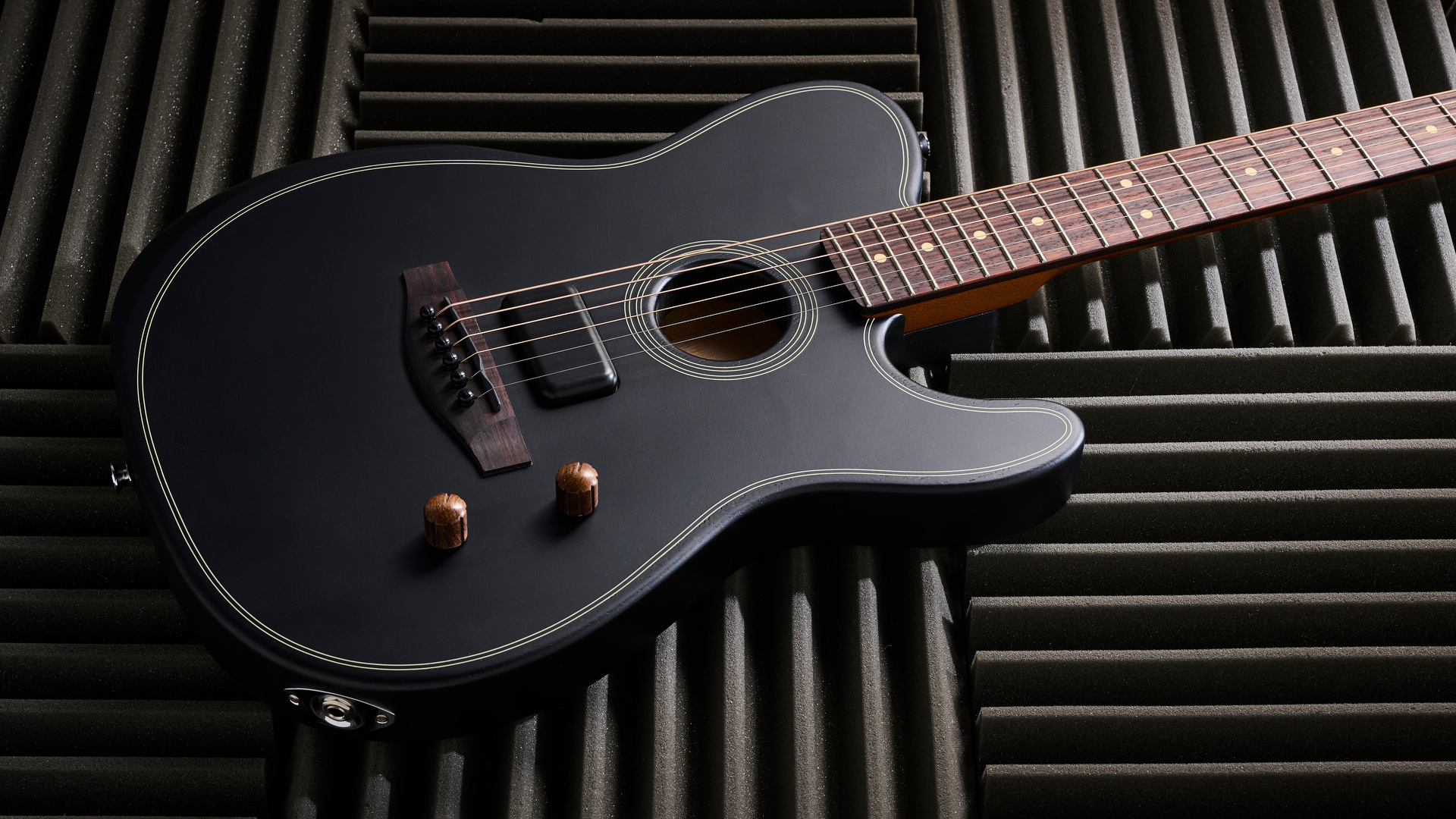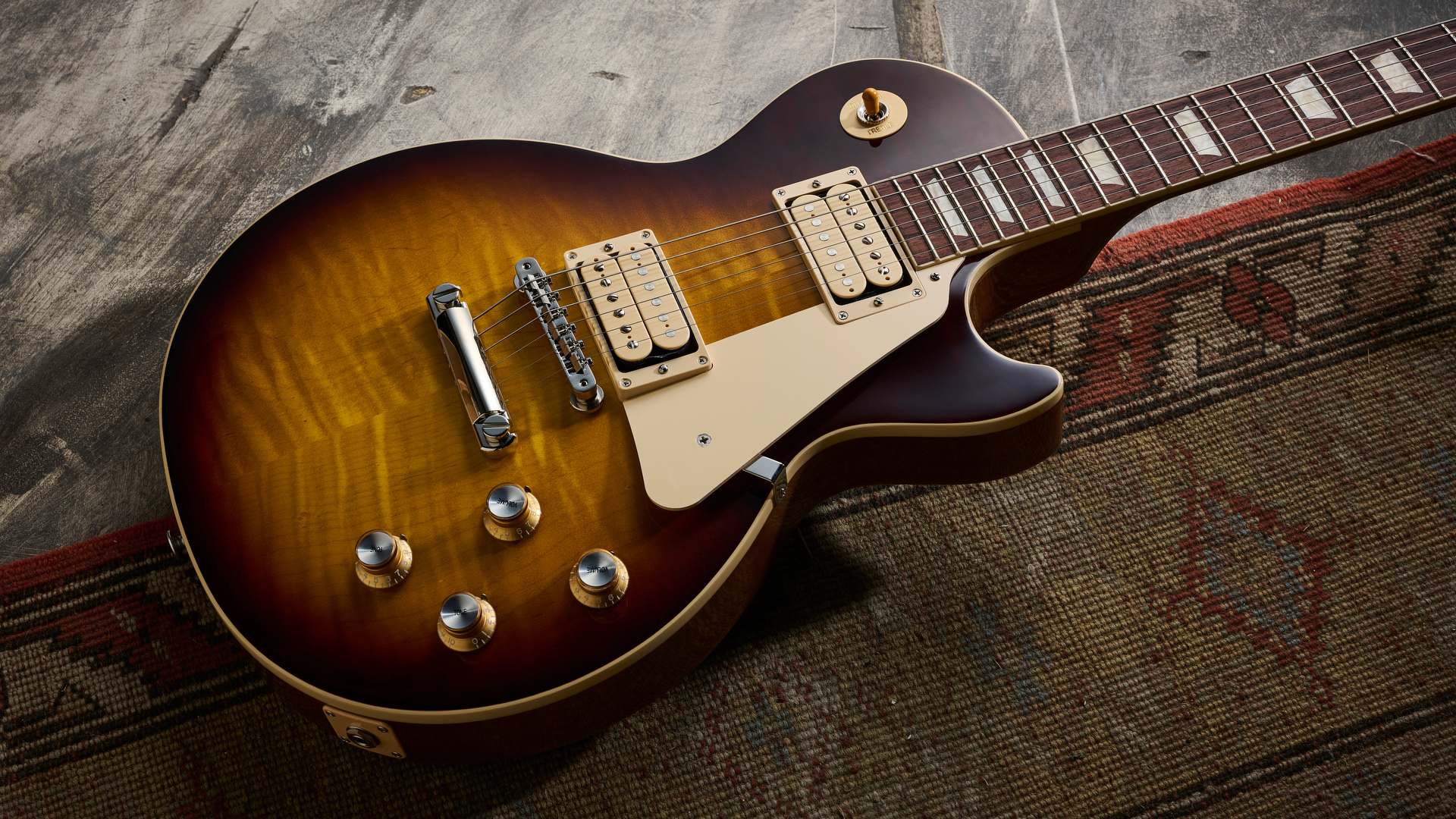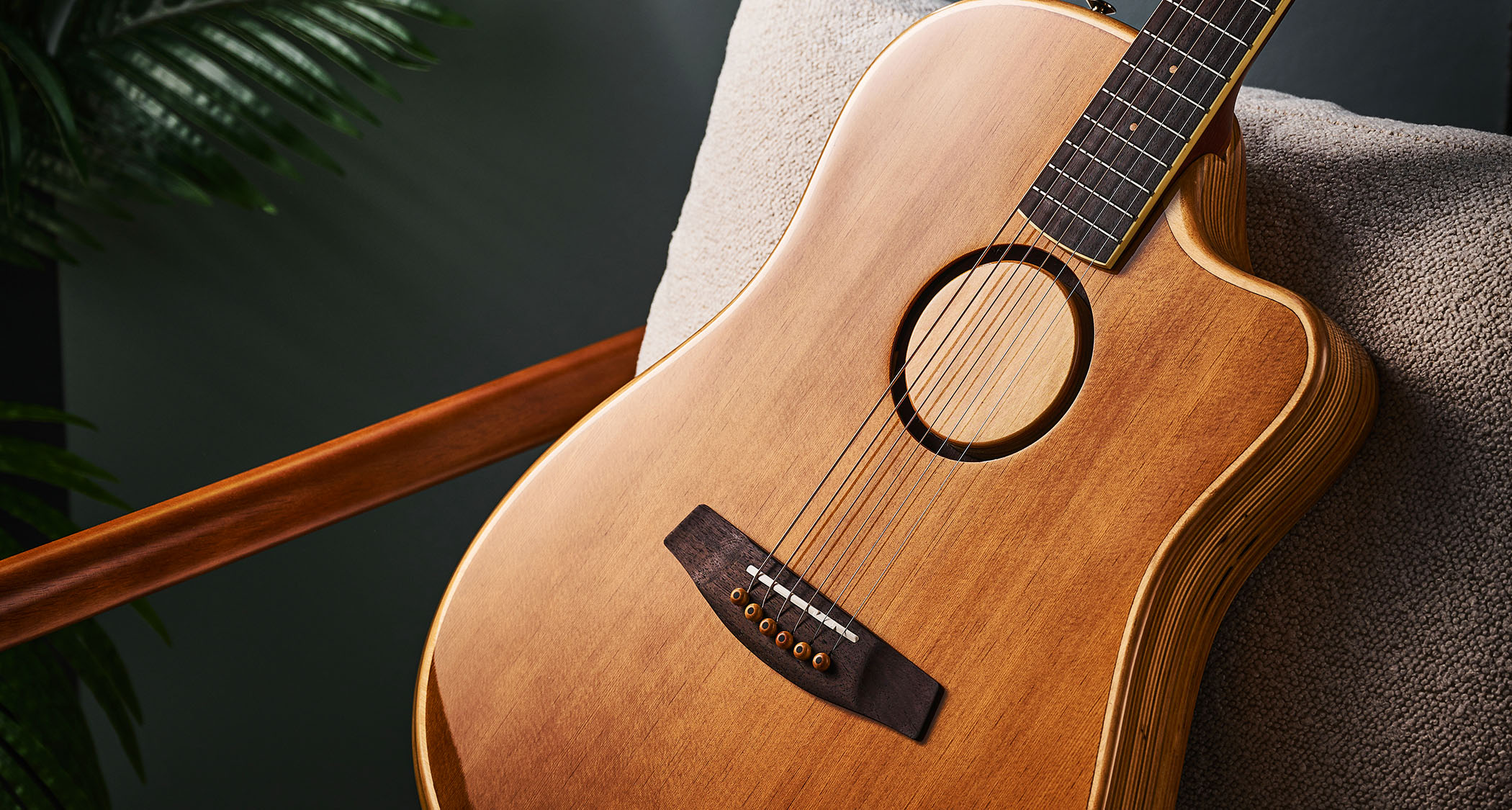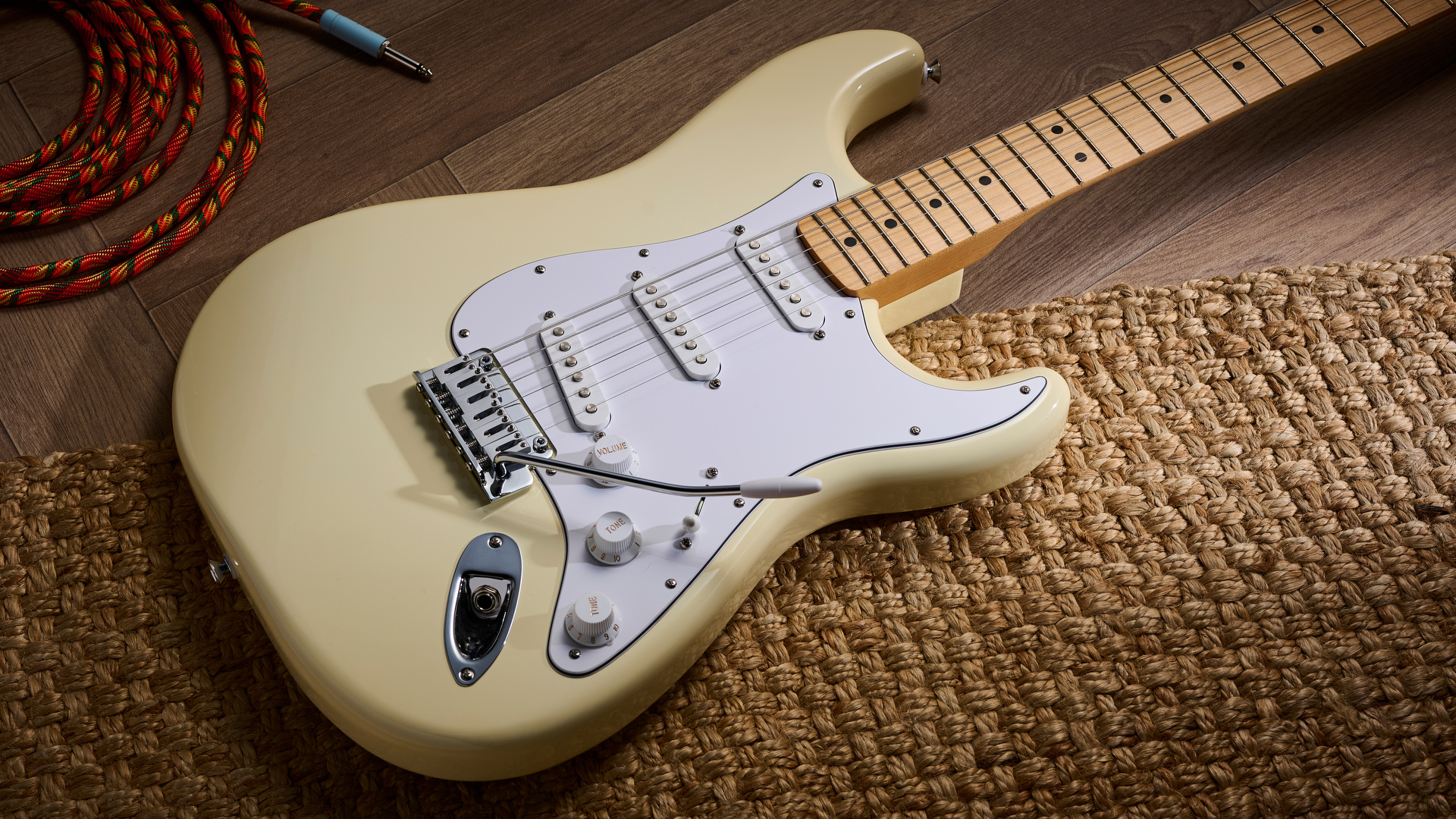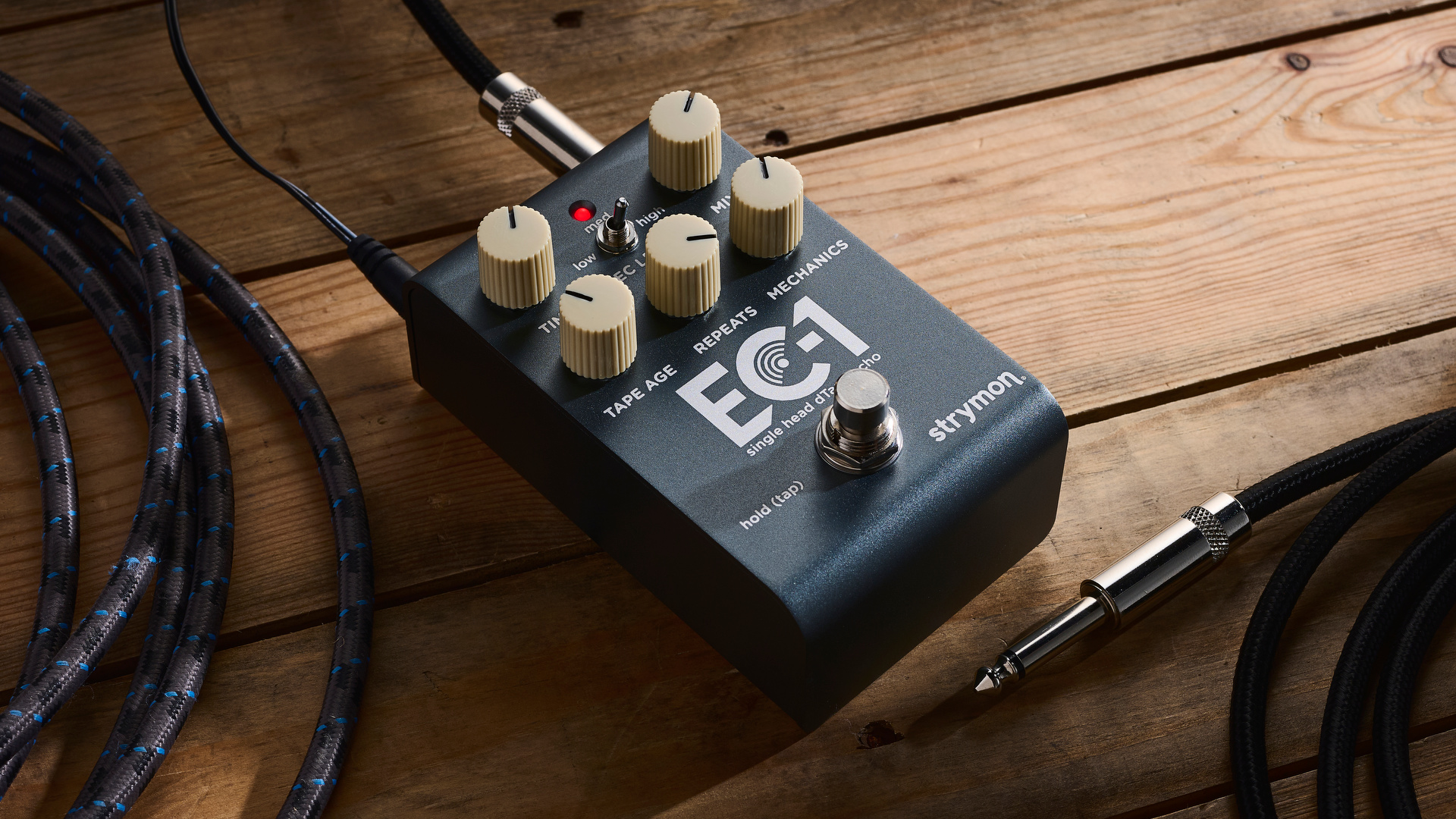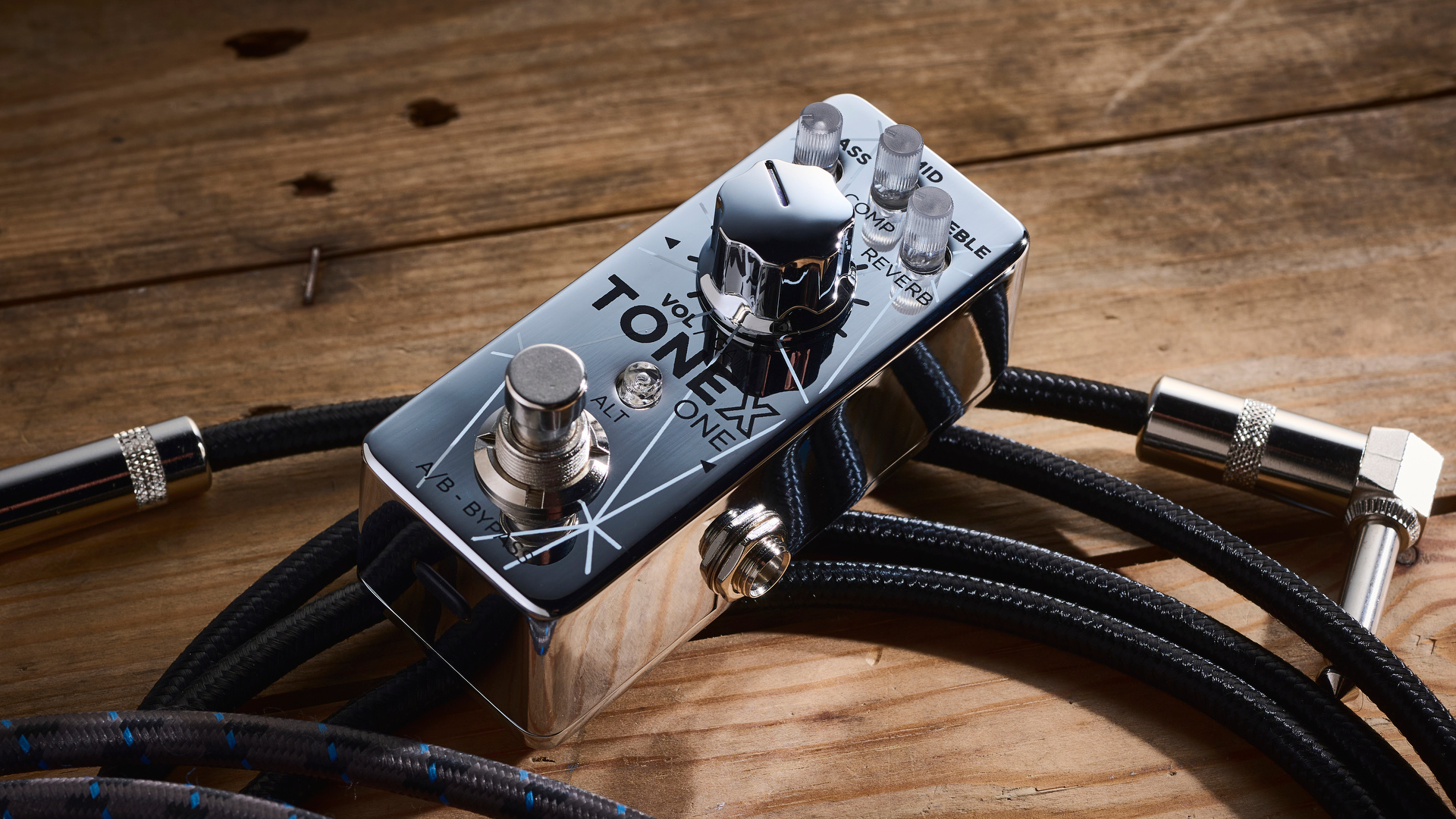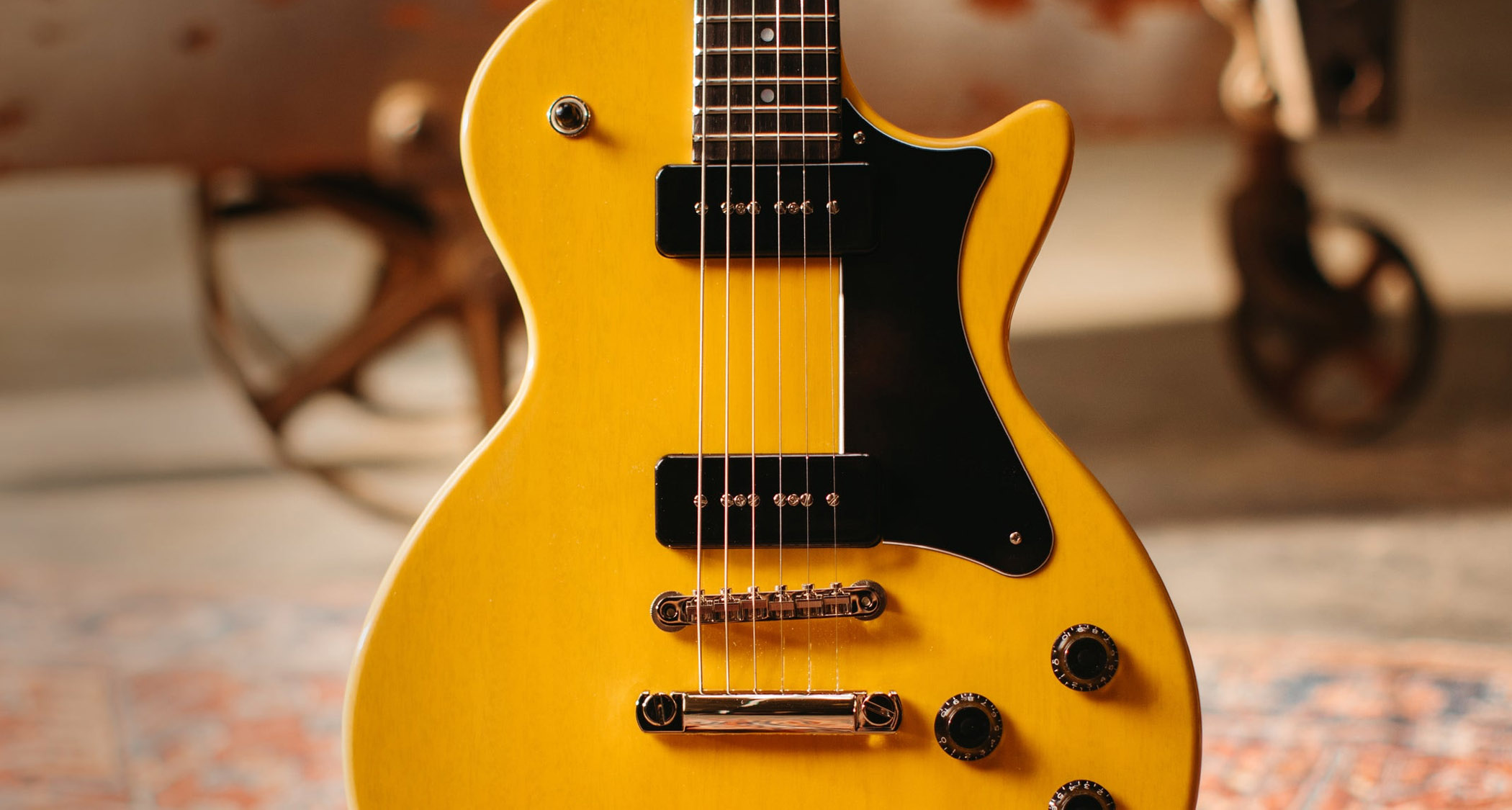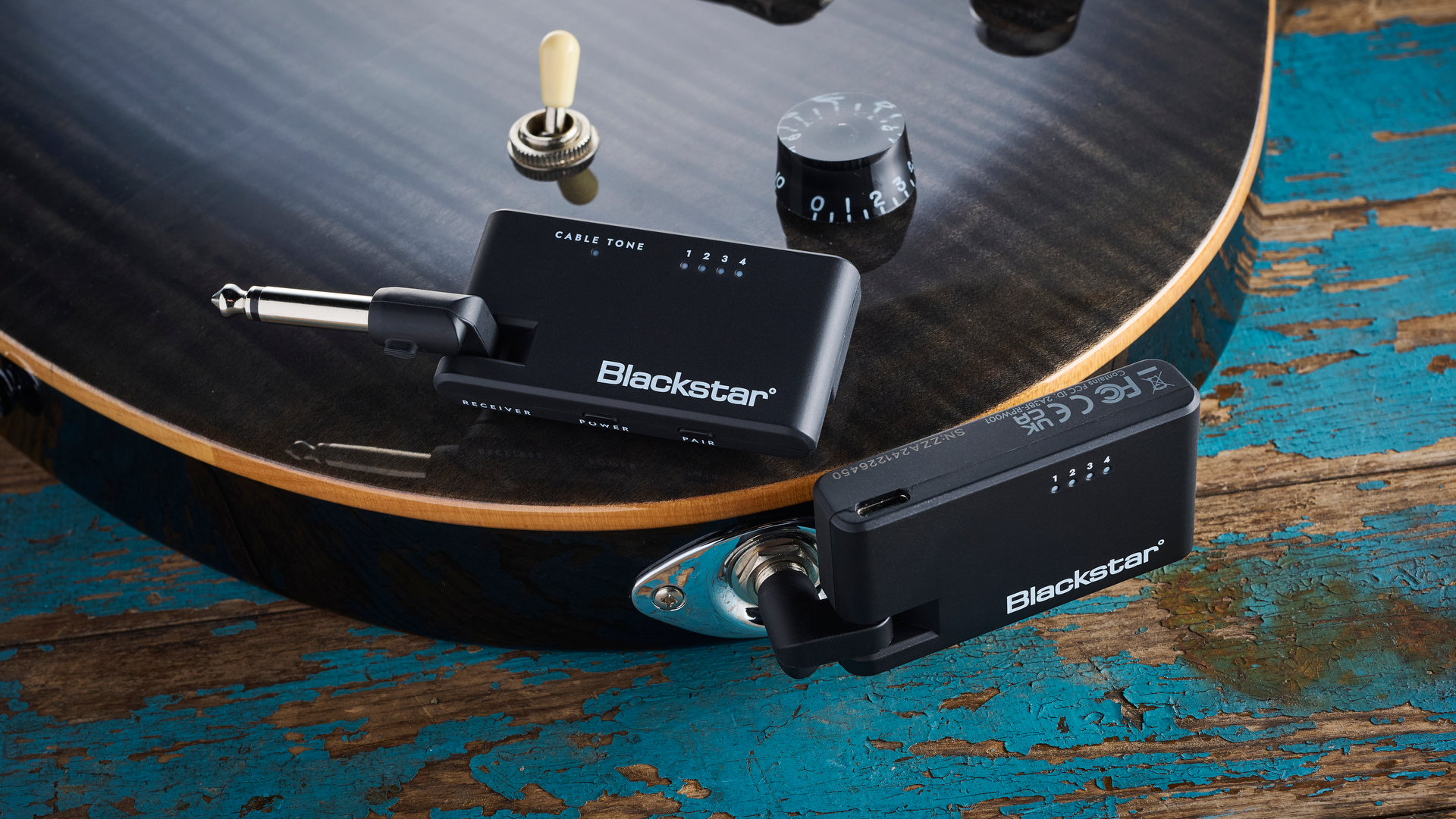Guitar World Verdict
Gibson continues the purposeful craft that we’ve seen consistently over the past four years, and the ’50s style and all-mahogany build paired with those Burstbuckers is inspired and sounds superb. While not perfect, the Epiphone is a steal: tidy build, great color and backstory, with wide-ranging, quality sounds to match.
Pros
- +
Epiphone has very good weight and neck profile.
- +
Pretty tidy build overall.
- +
Great voicing, with its vintage-style circuit.
- +
JoBo's signature is quite the looker!
- +
Standard is a very good example of Gibson USA’s current ’50s-style build.
- +
The all-mahogany construction and Burstbuckers are a great match.
- +
Blues-rock heaven!
Cons
- -
Epiphone has a few minor details that could be sorted easily.
- -
Not everyone will enjoy the Gibson's weight or the ‘wrong’ color – can we have black or white, please?
You can trust Guitar World
What is it?
Choices, choices, choices: you want to buy a new Les Paul but which one? At the time of writing, and excluding Juniors and Specials, Gibson USA has quite a few and Epiphone has quite a few more, priced collectively from the low hundreds up to almost $5k/£4k. We’ll leave the Custom Shop out of this discussion.
Our two new additions pretty much sit in the mid-point of their respective Gibson and Epiphone ranges. Yes, they are priced quite differently, and this reflects their respective countries of origin and the overall, more cost-effective parts and pickups of the ‘offshore’ model. They share plenty, however. Both employ unusual colours and both have a ’50s aim. But, for the money, which is best?
While both follow the Les Paul recipe, as their titles suggest there’s outwardly none of the modernism we’ve seen in both brands’ more progressive designs. There’s no weight relief or chambering, although the Epiphone is the lighter of the two at 3.96kg (8.71lb) and the Gibson chunkier at 4.22kg (9.28lb).
Both use mahogany backs. You can clearly see the grain and centre joint of the Epiphone through its rich brown transparent finish, and while you can’t see that detail on the Gibson, we suspect it is standard two-piece as the overall TV Yellow finish is semi-opaque.
While the Gibson uses a mahogany (not maple) top – the point of the model – the Epiphone’s is spec’d as being maple, although you can’t see that under this rather fabulous Copper Iridescent top colour. Both top carves are very similar and, if we’re honest, they lack that lovely re-curve as the dishing meets the outer edges.
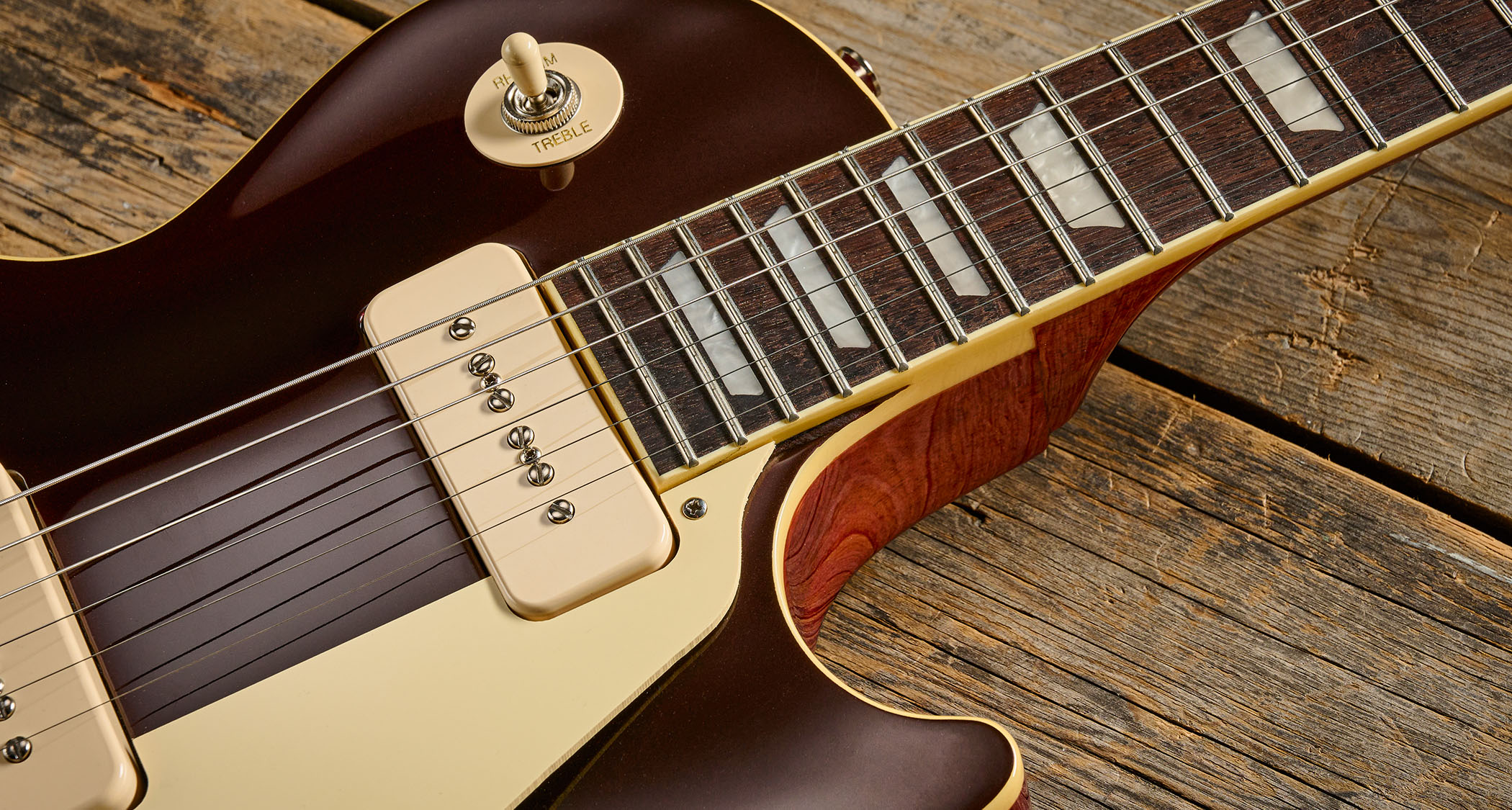
Obviously, the Gibson uses binding around the top body edge and fingerboard, though, unusually, it’s black, while the Epiphone’s is traditional cream. The Gibson, of course, is finished in a gloss nitrocellulose, and the Epiphone is presumably polyester and similarly glossed, unlike that slinky burnished satin of models such as the more expensive Epiphone ‘Greeny’.
Both guitars are full-depth: the Gibson maxes out at approximately 61mm by the bridge and is 51mm at the rim; the Epiphone is just under a millimetre thinner.
With both guitars laying on their backs you can see the neck angle is slightly flatter on the Epiphone, but the tune-o-matic actually sits slightly higher.
The Gibson’s bridge is as close to the top as you’d want it to allow for different string height tastes, certainly on the treble side. It means that the Epiphone’s bridge soapbar sits quite high, too, and unlike the guitars from the ’50s, the pickup rout doesn’t follow the string angle; the cavity base is parallel to the flat back.
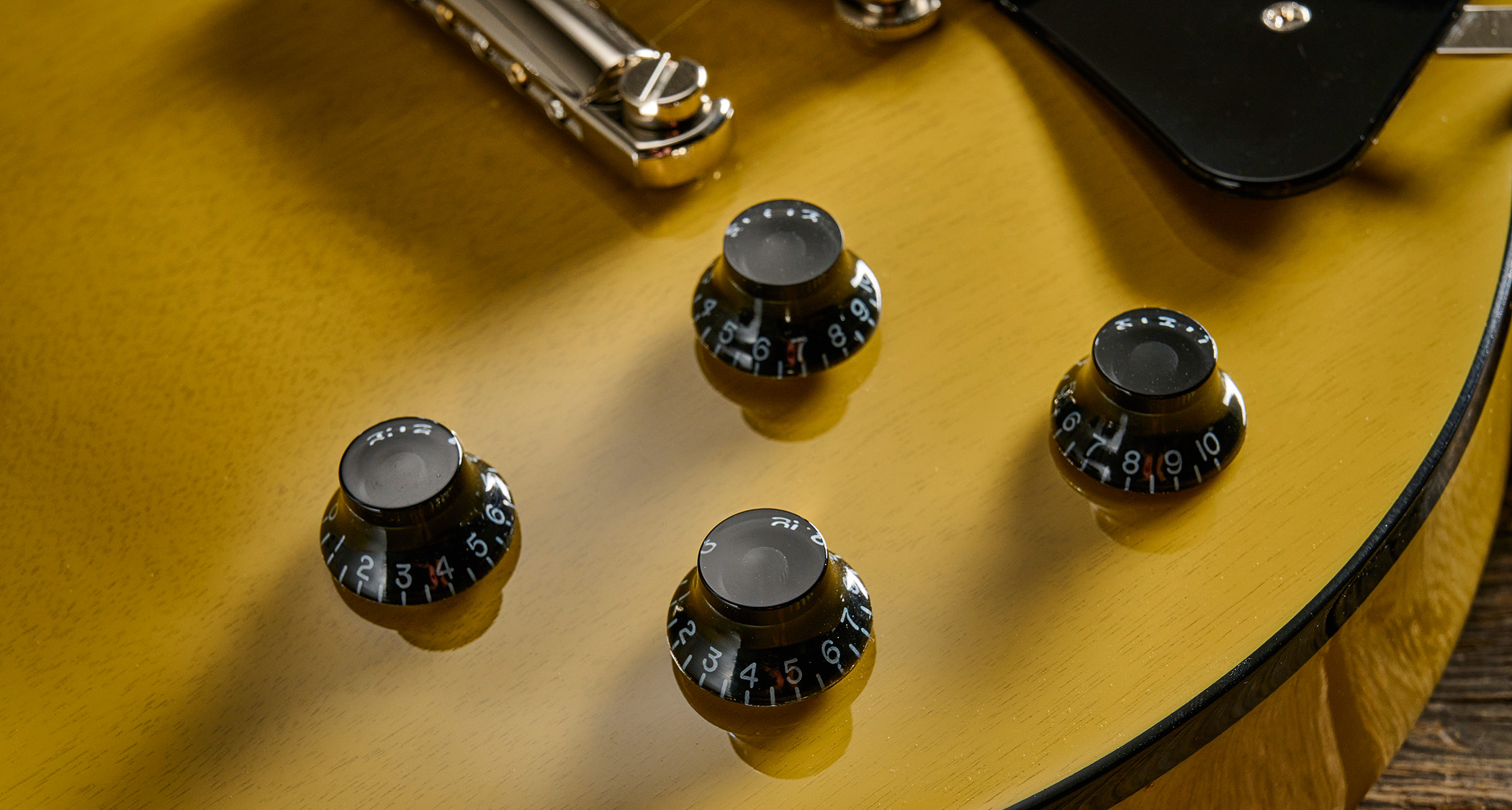
The Gibson’s headstock has a steeper back angle and appears thicker, but they’re both pretty similar, just a fraction over 15mm at the tip. And side by side you can see the difference in the headstock shapes, not least the up-turned tips of the Gibson head with its overall sharper edges.
The differences continue with the fingerboards. The Gibson’s is a good-looking, lightly striped dark and rich coloured rosewood, and the Epiphone’s is laurel with a more consistent dark brown colouration – it doesn’t look ‘wrong’ in any way.
The Gibson trapezoid inlays have sharp swirly detail to the acrylic; the Epiphone’s are slightly softer and more mottled. While the medium-gauge fretwire wire is pretty similar on both (neither is particularly high), the fret ends sit over the thinner binding on the Epiphone, while the thicker black binding of the Gibson forms the end of the fret ends, aka the ‘nibs’.
Although the nut width on the Gibson is slightly wider at 43.95mm as opposed to 43.1mm of the Epiphone (the string spacing on the Epi is 35mm, the Gibson is 36mm), the neck widths at the 12th and top 22nd frets are very similar – pretty much 53.5mm and 57.6mm – while the string spacing at the bridge is the same on both at 51mm.
This does mean that you have less metal fret width on the Gibson: 49mm compared with 52mm of the Epiphone, for example, when measured at the 12th fret. Both traditional neck heels are similarly dome-nosed – the Epiphone’s is slightly longer.
Hardware
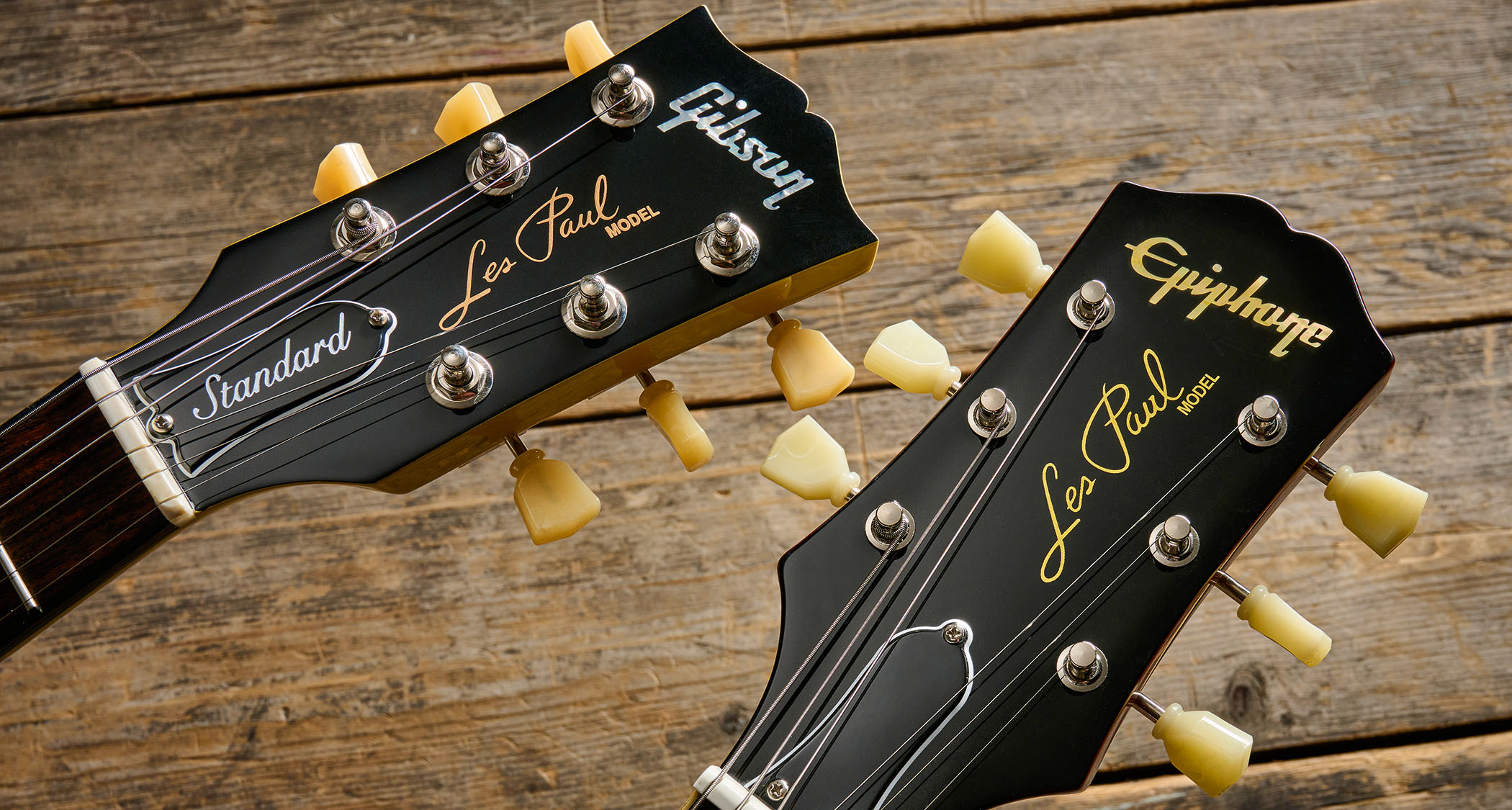
Both tuner sets are based on the original Klusons, and the Epiphone’s look a little more vintage with push-in bushings on the headstock face. The more modern-style Gibson tuners have a squarer-edged body and use the also more modern screw-on nut mounting on the headstock face.
The nut material on both is quoted only as Graph Tech, presumably Tusq, but the Epiphone’s is larger with a heavily curved back edge; the Gibson’s is a smaller, squarer section. Neither is shaped to boutique standard, but both are tidy enough.
Like the tuners, the hardware might look the same, but the Gibson model uses the standard ABR-1 tune-o-matic with a lightweight aluminium stopbar. The Epiphone’s actually stays in place when you take off the strings, and we have no idea of the material used. We also get the always handy (but not vintage-correct) slot-head post adjustment for the bridge.
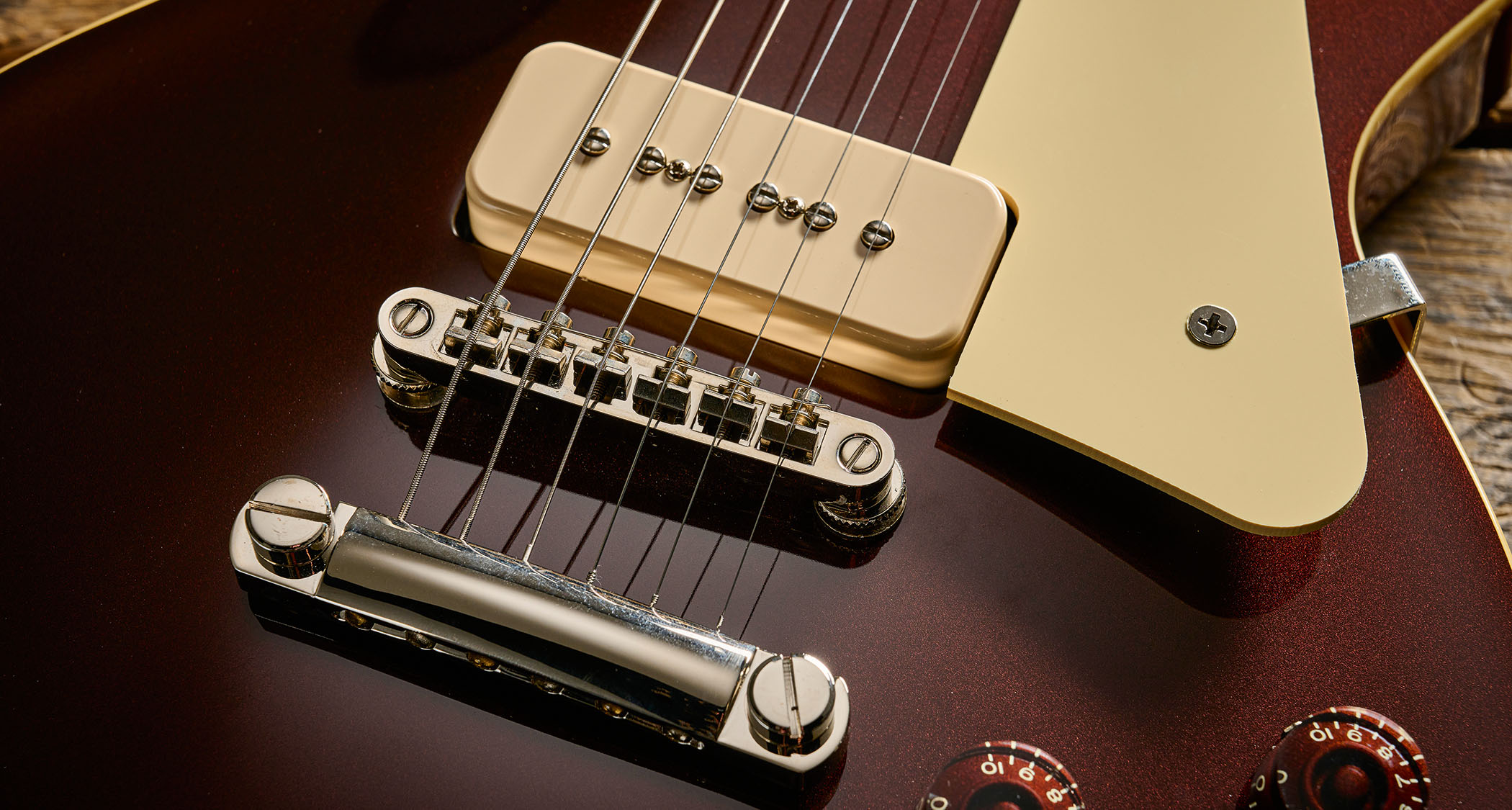
Colour aside, the Gibson’s pickguard has nicely finished smoothly chamfered edges and perfectly lines up and fits around the humbuckers’ mounting rings. The Epiphone’s has sharp, unfinished and square edges, and the fit around the soapbar single coils is, at best, approximate.
The plastic output jack plates follow the binding colour, likewise the ‘poker chip’ toggle switch surrounds. And while the Gibson uses black bonnet knobs, the Epiphone’s speed knobs – which have rather sharp edges – look to have been painted underneath to match the top colour. Another nice detail.
Usability and sounds
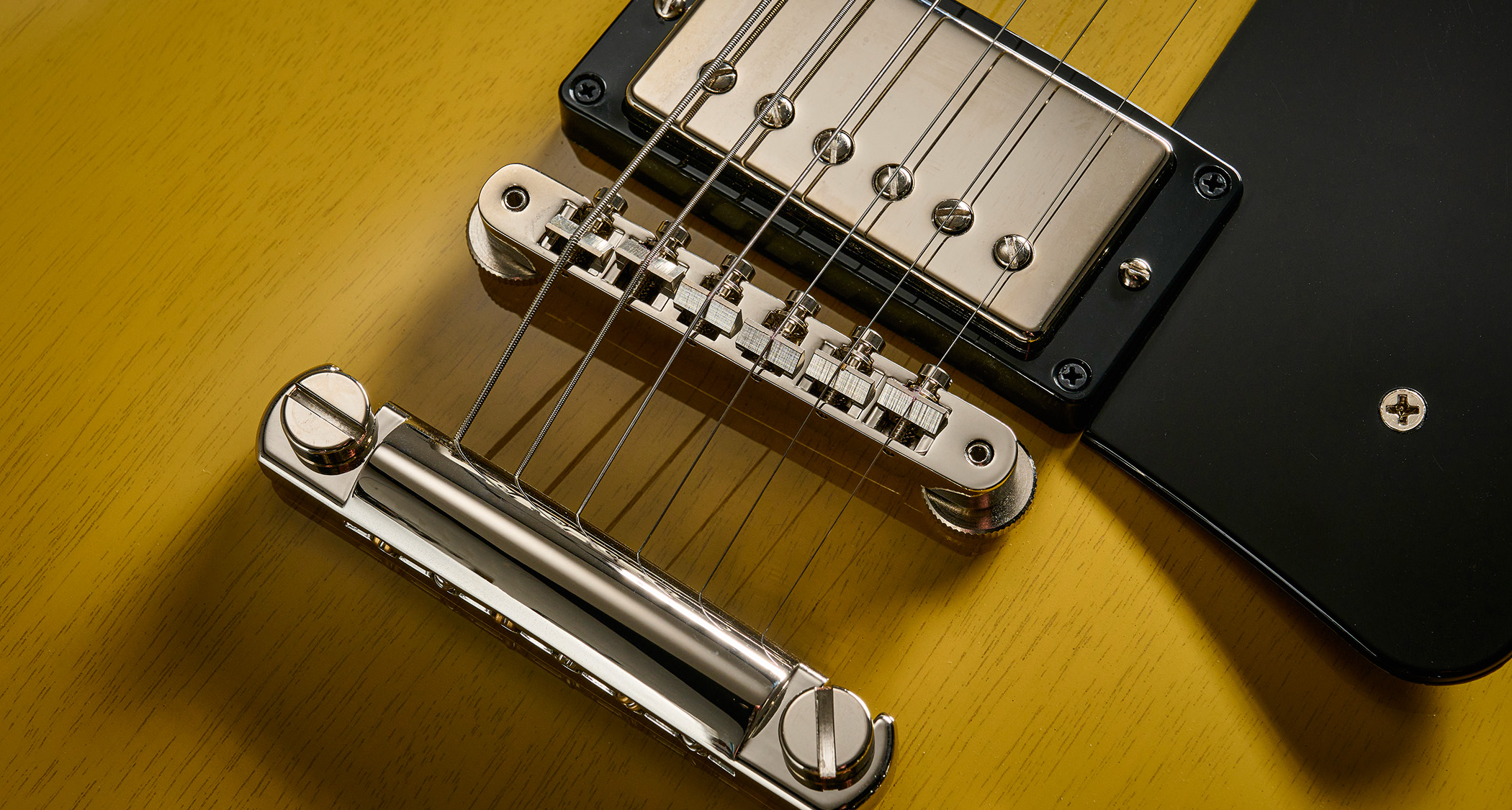
While the overall weight might well be your first impression, it’ll be quickly followed by the neck profile. With pretty similar widths, the necks both have that big feel, but the Gibson feels fuller, with a rather appealing and quite full-shouldered C, which has a depth of 22.7mm at the 1st fret and 25.5mm by the 12th.
While the Epiphone is only fractionally slimmer in depth (22.1mm at the 1st fret, 24.9mm by the 12th), it has slightly less full shoulders, which help to create an overall less bulky feel.
Setups are really very similar, too. The Epiphone needed a slight tweak of the truss rod to reduce the curve and give it some very light relief, like the Gibson, and match the 12th-fret string heights of just over 1.5mm on the treble and a little under 1.8mm on the bass side.
Both are supplied with 0.010 to 0.046 gauge strings and, bearing in mind the vastly different price, they actually have very similar playing feels. The Epiphone’s fret tops could do with a little more smoothing, likewise the ends, but we’re splitting hairs somewhat… and the nut grooves on both are left slightly high.
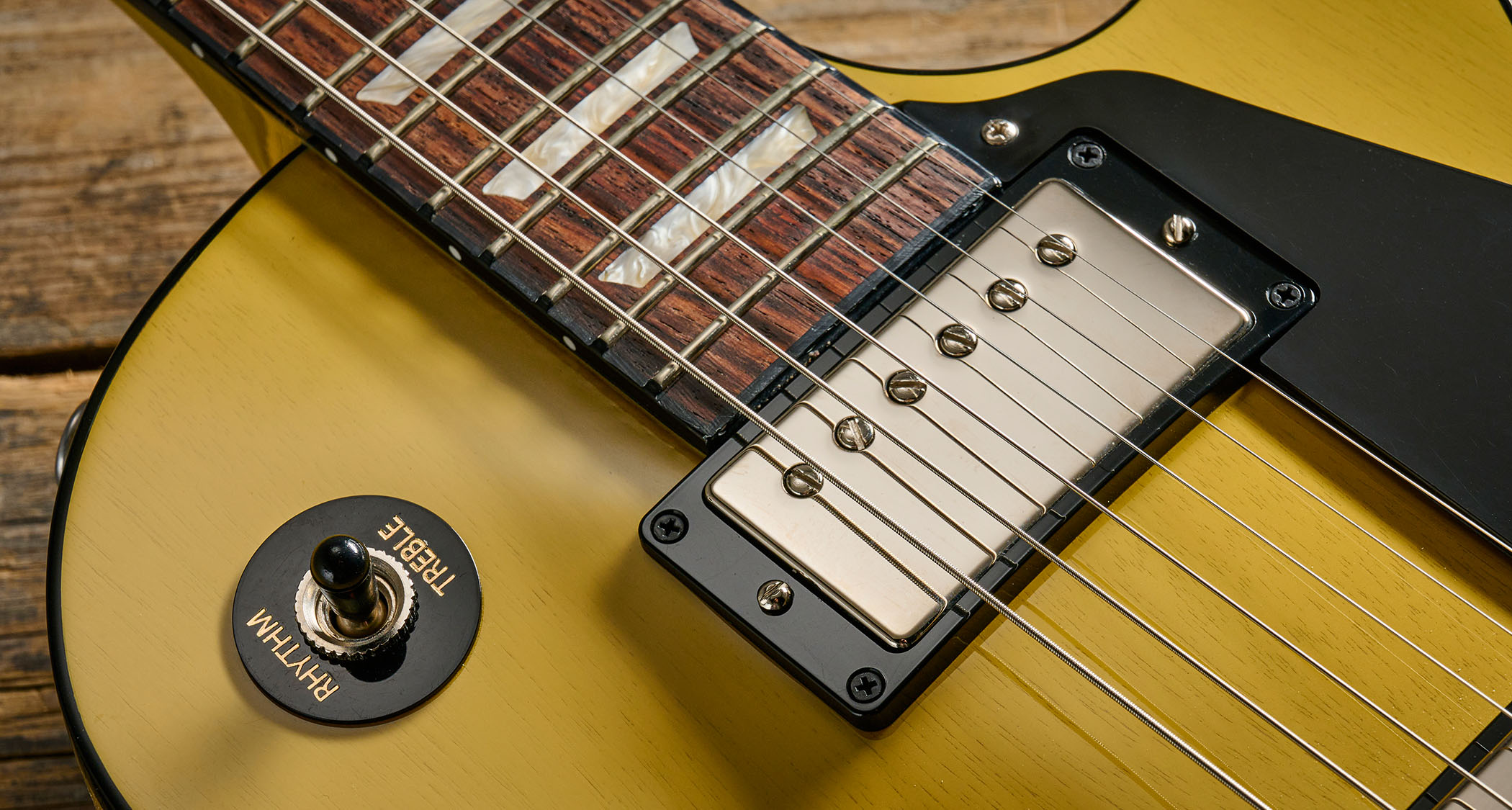
Playing unplugged, they might feel pretty similar, but the Gibson has noticeably more acoustic volume. It feels more alive, too, although the Epiphone feels far from an inert, dead plank. In terms of neck shape alone, there will be plenty of players who are going to prefer the Epiphone.
Now, obviously, in terms of plugged-in sound, we have two very different sets of pickups, and it’s less about the quality of sound but more about the preference of the player. P-90s come in plenty of flavours, and from the off the Epiphone certainly doesn’t lack power or kick. At the bridge, it’s like a slightly rawer late-’50s humbucker style, less smooth with plenty of midrange colour.
The neck pickup is quite a contrast – big and vocal with good depth and clarity, and it doesn’t sound over-smooth. Then there’s that middle position, which, with some volume reduction on both pickups, nods to a more Fender-y, Gretsch-like character with jangle and soulful funk. Impressive.
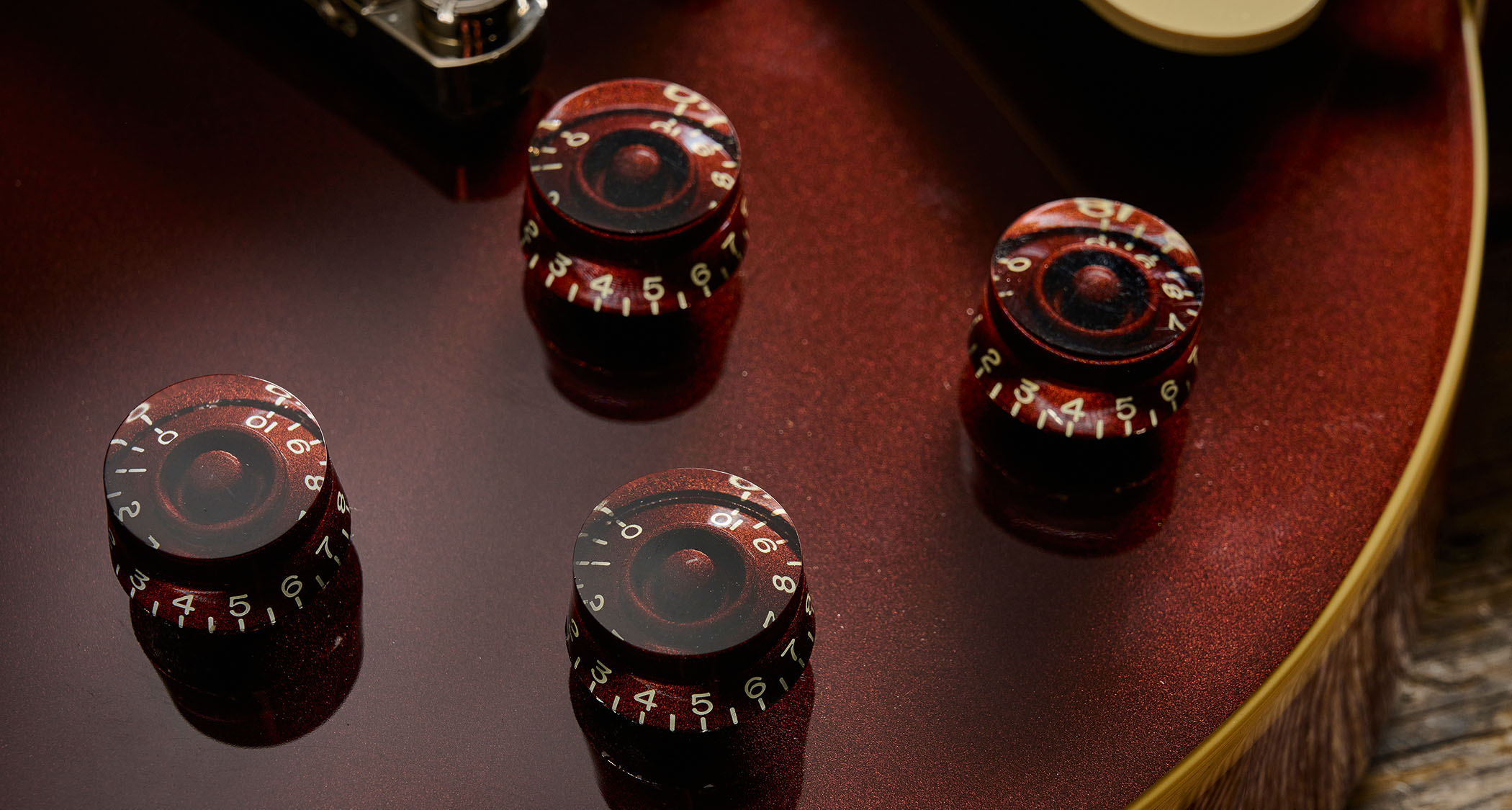
Now, we couldn’t compare the Epiphone to a real ’55 Les Paul, but another reference, a ’57 Les Paul Junior, is rather illuminating in that the lowly Epiphone doesn’t disgrace itself.
The vintage Junior has a bit more depth and sizzle, and arguably a classier neck profile (big but lightly V’d in lower positions), but we’re talking sound here and, really, it’s far from lacking. It also has that neck pickup and plenty more sounds.
At full chat, the Gibson sounds glorious! The Burstbuckers here aren’t over-egged and comparing it to our reference Les Paul Classic (retrofitted with the same pickups) it is slightly less bright, but it has a little more creamy grind
At full chat, the Gibson sounds glorious! The Burstbuckers here aren’t over-egged and comparing it to our reference Les Paul Classic (retrofitted with the same pickups) it is slightly less bright, but it has a little more creamy grind, the absolutely classic sonic feature of the Gibson solidbody that this ’Paul really focuses on.
This really is blues-rock heaven. Pulling the volumes back does pull that clarity back, though – and again, depending on the player, that can be good or bad.
One thing is that the Epiphone is wired vintage style. The Gibson modern style has quite an impact if – and only if – you use your volume and tone controls to vary your sounds and levels.
So the edge and “sparkle”, as JoBo puts it, of the Epiphone’s single coils are pretty much retained as you pull back the volumes, cleaning up but not rounding what you hear. As you pull back the tones, they thin the sound before the roll-off is applied at the end of the travel. It’s a very different drive.
So while it’s little surprise that these are different-sounding Les Pauls, we’re not hearing £1,600 (or, in the US, $1,750) difference in the sonic quality, feel or playability. Far from it.
Verdict
We’re a funny old bunch, aren’t we? Plenty of players aspire to owning the real thing and plenty frankly don’t care. As the models are considerably different in price, however, we have to ask: is the Gibson really that much ‘better’ than the Epiphone?
Sound-wise, we’re not comparing like with like, but with its vintage-correct wiring, the Epiphone is very viable with a quality of sound that sort of shouts, ‘Beat that!’
There isn’t very much difference in the primary construction details, and some would argue the lighter weight and more refined neck profile of the Epiphone are preferable.
Yes, scrappy details such as that rough-cut pickguard and the sharp-edged control knobs of the Epiphone let the side down, but its more regular fretting might be preferred over the rather archaic binding ‘nibs’ of the Gibson’s frets.
Sound-wise, we’re not comparing like with like, but with its vintage-correct wiring, the Epiphone is very viable with a quality of sound that sort of shouts, ‘Beat that!’ Okay, for that classic, full-fat creamy humbucker Les Paul voice, we’d choose the Gibson, but the slightly rawer, punkier voicing of the Epiphone is hugely valid, plus, with volume reduction, it has more rather good single-coil voicings that the Gibson can’t match.
Guitar World verdict: Which is best? Well, the Gibson continues the purposeful craft that we’ve seen consistently over the past four years, and the ’50s style and all-mahogany build paired with those Burstbuckers is quite inspired and sounds superb.
But, while not perfect, the more vintage-aimed Epiphone is simply a steal: tidy build, great colour and backstory, with wide-ranging, quality sounds to match.
Specs
Epiphone Joe Bonamassa 1955 Les Paul Standard
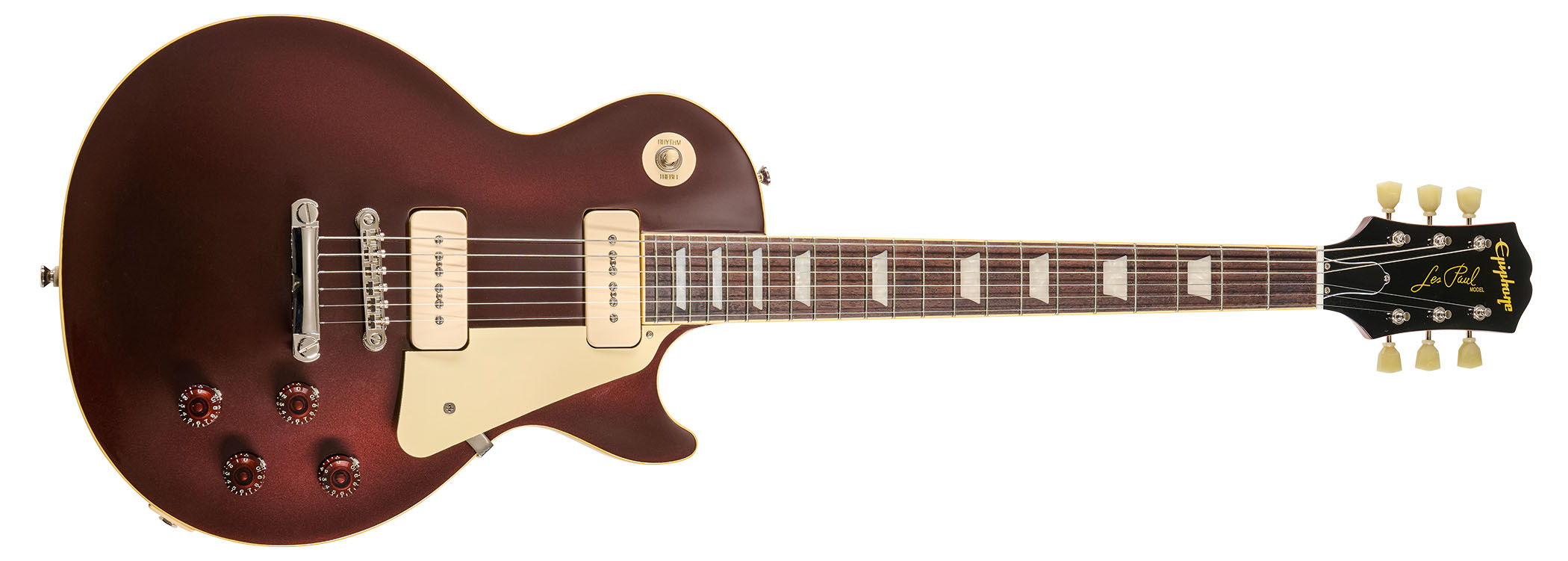
PRICE: $849/£799 (inc hard case)
ORIGIN: China
TYPE: Single-cutaway, solidbody electric
BODY: Mahogany with bound carved maple top
NECK: Mahogany, ‘Custom ’59 Rounded C’ profile, glued-in
SCALE LENGTH: 629mm (24.75”)
NUT/WIDTH: Graph Tech/43.1mm
FINGERBOARD: Cream bound laurel, pearloid trapezoid inlays, 305mm (12”) radius
FRETS: 22, medium jumbo
HARDWARE: Epiphone LockTone tune-o-matic bridge and stopbar tailpiece, Epiphone Deluxe vintage-style tuners w/ keystone buttons – chrome/nickel plated
STRING SPACING, BRIDGE: 51mm
ELECTRICS: Epiphone P-90 Pro soapbar single coils (neck and bridge), 3-way toggle pickup selector switch, volume and tone for each pickup
WEIGHT (kg/lb): 3.96/8.71
OPTIONS: None
RANGE OPTIONS: See The Rivals
LEFT-HANDERS: Not this model
FINISHES: Copper Iridescent metallic (as reviewed) – all gloss
CONTACT: Epiphone
Gibson Les Paul Standard ’50s Mahogany Top
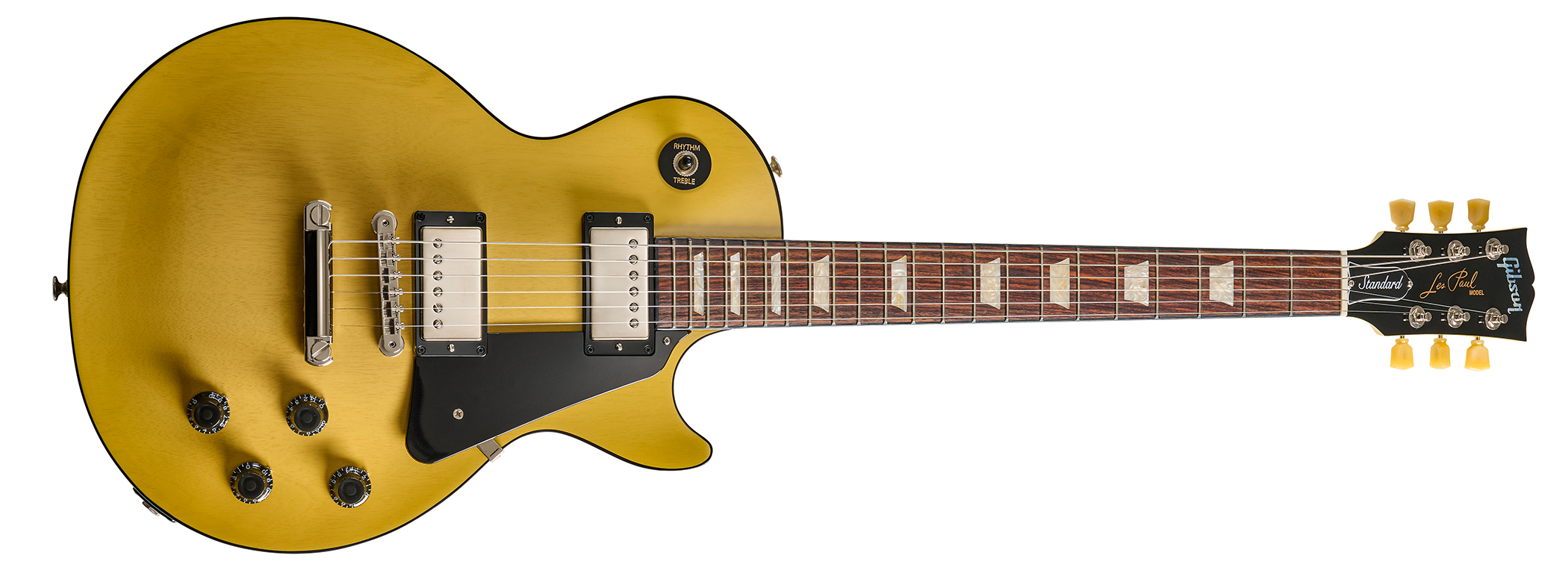
PRICE: $2,599/£2,399 (inc hardshell guitar case)
ORIGIN: USA
TYPE: Single-cutaway, solidbody electric
BODY: Mahogany with carved top
NECK: Mahogany, ‘50s Vintage’ profile, glued-in
SCALE LENGTH: 629mm (24.75”)
NUT/WIDTH: Graph Tech/43.95mm
FINGERBOARD: Black bound rosewood, acrylic trapezoid inlays, 305mm (12”) radius
FRETS: 22, medium jumbo
HARDWARE: ABR-1 tune-o-matic bridge and aluminium stopbar tailpiece, Vintage Deluxe vintage-style tuners w/ keystone buttons – chrome/nickel plated
STRING SPACING, BRIDGE: 51mm
ELECTRICS: Gibson Burstbucker 2 (bridge) and Burstbucker 1 (neck) covered humbuckers, 3-way toggle pickup selector switch, volume and tone for each pickup
WEIGHT (kg/lb): 4.22/9.28
OPTIONS: The Les Paul Standard ’60s Mahogany Top has the same price and colour but has 60s Burstbucker humbuckers and SlimTaper neck profile
LEFT-HANDERS: Not this model
FINISHES: TV Yellow (as reviewed), Vintage Cherry (online exclusive) – all gloss nitrocellulose
CONTACT: Gibson
Hands-on videos
Epiphone with Joe Bonamassa
The Trogly's Guitar Show


Norman's Rare Guitars
Cream City Music
American Musical Supply


Dave Burrluck is one of the world’s most experienced guitar journalists, who started writing back in the '80s for International Musician and Recording World, co-founded The Guitar Magazine and has been the Gear Reviews Editor of Guitarist magazine for the past two decades. Along the way, Dave has been the sole author of The PRS Guitar Book and The Player's Guide to Guitar Maintenance as well as contributing to numerous other books on the electric guitar. Dave is an active gigging and recording musician and still finds time to make, repair and mod guitars, not least for Guitarist’s The Mod Squad.
You must confirm your public display name before commenting
Please logout and then login again, you will then be prompted to enter your display name.
“It holds its own purely as a playable guitar. It’s really cool for the traveling musician – you can bring it on a flight and it fits beneath the seat”: Why Steve Stevens put his name to a foldable guitar
“Finely tuned instruments with effortless playability and one of the best vibratos there is”: PRS Standard 24 Satin and S2 Standard 24 Satin review
